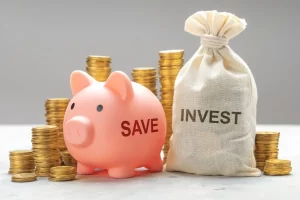- Extra Income
How to Start a Small Business with Little Money

Starting a small business is one of the most powerful ways to build financial independence, create impact, and take control of your career. But many aspiring entrepreneurs are held back by one thing: money.
The idea that starting a business requires a large investment is a myth. While some business models do require capital, many can be launched on a small budget—especially with the help of digital tools, remote work trends, and creative problem-solving.
In this guide, you’ll learn how to start a small business with limited funds, how to minimize risks, and what steps to follow to launch a successful venture even on a shoestring budget.
Why Start a Business with Little Money?
Starting small has advantages beyond just saving money. It forces you to be resourceful, creative, and focused. Many of today’s most successful entrepreneurs began with little more than an idea and determination.
Key Benefits:
- Low financial risk
- Faster launch time
- More flexibility to pivot
- Scalable over time
- Accessible to people with limited resources
If you’ve been waiting for the “perfect” time or amount of money to start—this is your sign to begin now.
Step 1: Choose a Low-Cost Business Idea
Not all businesses require inventory, employees, or physical space. Many can be started with minimal tools, especially online.
Popular Low-Investment Business Ideas:
- Freelance services (writing, graphic design, web development)
- Consulting or coaching
- Virtual assistant services
- Dropshipping
- Digital products (ebooks, templates, online courses)
- Affiliate marketing
- Print-on-demand stores
- Handmade or craft-based products
- Social media management
- Tutoring or teaching online
Choose something that matches your skills, interests, and lifestyle.
Step 2: Validate Your Idea Without Spending Money
Before investing time or resources, you need to know if your idea has real potential. Validation is the process of testing whether people want what you’re offering.
How to Validate Your Idea for Free:
- Talk to potential customers (friends, forums, social media groups)
- Create a simple landing page with a free tool (like Carrd or Mailchimp)
- Launch a survey using Google Forms or Typeform
- Offer a beta version or test run for feedback
- Post in Facebook groups or Reddit communities and track interest
Your goal is to confirm there’s demand, not just a good idea.
Step 3: Start with What You Have
You don’t need fancy equipment or expensive software to begin. Use what you already have:
- Your phone for recording videos, taking photos, or communicating
- Free software for design, writing, scheduling, and file sharing
- Your network for feedback, word-of-mouth, or collaborations
Start by offering value with the tools you already own. As you earn, you can reinvest into upgrades.
Step 4: Keep Operations Lean
“Bootstrapping” means building a business using personal resources and minimizing expenses. This mindset helps you stay lean and focused.
Ways to Cut Costs:
- Use free tools (Canva, Trello, Google Drive, Zoom, Notion)
- Work from home or a free co-working space
- Learn basic skills yourself (instead of outsourcing everything early)
- Trade services with other small entrepreneurs
- Reinvest profits instead of seeking loans
Avoid unnecessary expenses until you’ve proven your business can generate income.
Step 5: Set Up a Simple Online Presence
Every business needs an online presence—even if it’s just a basic landing page or social media profile.
Free/Low-Cost Options:
- Instagram and Facebook pages to promote your service or product
- LinkedIn profile if you’re offering B2B or freelance services
- Google My Business listing for local services
- Free website builders: Carrd, WordPress.com, Wix, or Shopify (with trial)
- Email marketing: Mailchimp or Brevo (free for small lists)
Your goal is to be visible, build trust, and make it easy for people to reach you.
Step 6: Focus on Sales First
Many new entrepreneurs spend too much time on logos, websites, and business cards. But without sales, you don’t have a business—you have a hobby.
How to Get Early Sales:
- Offer a pre-order or early access discount
- Reach out directly to people in your network
- Join online communities and provide value (then mention your offer)
- Use marketplaces like Etsy, Fiverr, or Gumroad
- Partner with micro-influencers or bloggers for promotion
Always start by helping real people solve real problems.
Step 7: Register and Protect Your Business (If Needed)
In the early days, you can often operate as a sole proprietor. But as you grow, consider:
- Registering your business name
- Getting a tax ID (EIN)
- Understanding local legal or tax requirements
- Setting up a separate business bank account
This varies by country, so consult local resources or a small business center for free guidance.
Step 8: Track Every Dollar
When working with a small budget, tracking your money is critical. Knowing where your income comes from—and where it goes—helps you make better decisions.
Use Free Tools:
- Wave Accounting
- Excel or Google Sheets
- Notion or Airtable templates
- PayPal or Stripe reporting features
Track income, expenses, and reinvestments. Set aside money for taxes if required in your region.
Step 9: Leverage Free Marketing
You don’t need to pay for ads to get visibility. In fact, many businesses grow using only free marketing tactics in the beginning.
Free Marketing Tactics:
- Create helpful, keyword-rich content (blogs, videos, guides)
- Share client testimonials and success stories
- Engage in social media groups and niche communities
- Start a referral program
- Guest post or collaborate with others in your niche
- Join podcasts or local events to share your expertise
The key is consistency and offering value before asking for a sale.
Step 10: Learn and Improve as You Go
You don’t need to know everything to start. The most successful entrepreneurs learn by doing. Start small, make mistakes, and adjust your plan along the way.
Where to Learn for Free:
- YouTube tutorials (for any topic)
- Podcasts on business, marketing, finance
- Free courses on platforms like Coursera, edX, and HubSpot Academy
- Blogs and newsletters by experienced entrepreneurs
- Local entrepreneurship support programs
Always be a student of your business.
Examples of Real Businesses Started with Little Money
To inspire you, here are a few examples of businesses that were launched with almost no capital:
- A freelance writer using Google Docs and free job boards
- A fitness coach offering sessions via Zoom
- A mom selling handmade candles on Etsy with recycled jars
- A teacher creating and selling lesson plans on Teachers Pay Teachers
- A photographer using a smartphone and editing apps to offer portrait sessions
They all had one thing in common: they started small and took action.
Mindset Shifts for Starting a Low-Budget Business
Success starts in the mind. If you’re starting a business with limited funds, it’s important to develop the right mindset.
Shift Your Thinking From:
- “I need more money” → to “How can I start with what I have?”
- “It has to be perfect” → to “Done is better than perfect”
- “I can’t compete” → to “I can serve a specific audience better”
- “I’m afraid of failing” → to “Every step is part of learning”
Entrepreneurship is a journey, and your first version is just the beginning.
Final Thoughts: You Don’t Need a Lot of Money to Build Something Great
You don’t need investors, expensive gear, or a fully developed product to start a business. What you need is clarity, action, and persistence.
Start with what you know. Solve one problem for one person. Keep it simple. Use free tools. Learn as you go. The more value you provide, the more income—and impact—you can generate.
In today’s world, with access to global platforms and low-cost tools, anyone can be a business owner. Yes—even you, and yes—even now.






